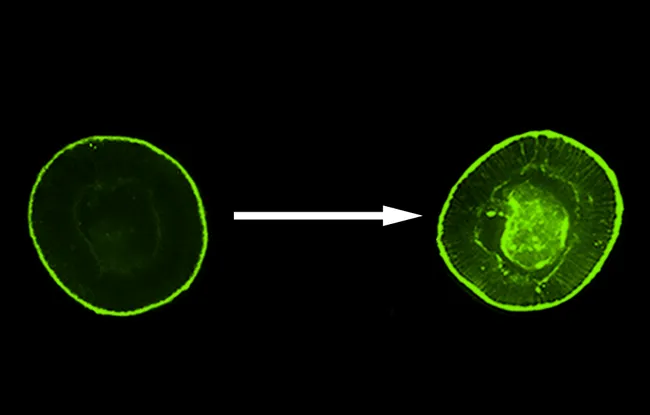- Home >
- Institut Curie News >
- Marine flow leading to formation of the primitive gut
One of the major evolutionary events leading to the first most primitive animal organisms, over 700 million years ago, is the formation of the very first organ from a hollow cell colony: the primitive gut.
The conditions resulting in the formation of this digestive tract, and thus largely of the first multi-cellular organism, remain unknown today.
This type of primary gut forms at the very start of the development of living animals today, namely in their embryos shortly after fertilization. But the biochemical signals required to trigger its formation in the embryo show wide variations depending on the species studied. This variability prevents the identification of a common biochemical process occurring in the very first animal organism, and inherited by the early embryos of animal species today in the formation of their primitive gut.
To resolve this, Emmanuel Farge, head of the Mechanics and genetics of embryonic and tumor development team (CNRS UMR168 / Sorbonne University), looked at an entirely different process, a mechanotransducive one.
With the help of Ngoc Minh Nguyen and Tatiana Merle, post-doctoral researcher and PhD student in his team, he discovered that the signal underlying the formation of the primitive gut could have been an environmental one, and more specifically mechanical, generated by marine flow in which the first animal organisms developed. They observed the mechanotransducive activation of the formation of the primary gut, dependent on the molecular motor Myosin-II, by application of hydrodynamic flows mimicking wavelets, on two marine species (Nematostella vectensis - Figure above - and Choanoeca flexa) whose common, pre-animal ancestor dates back at least 700 million years.
These observations tend to show that the mechanical marine environment had a major role in activating the biochemical processes occurring in the emergence of the very first organ of the most primitive animals, and thus in the emergence of the first metazoans.
Inherited by all the organs of all living animals today, this mechanosensitivity could be reactivated abnormally by mechanical pressure constraints related to tumor growth, and thus lead to over-production of the tissues of the organs in question. It is the same biochemical pathway (the beta-catenin pathway) that we find to be mechanically activated in the specification of primitive digestive tracts induced by hydrodynamic flows, and in the mechanical induction contributing to tumorigenesis in colon cancer in mice.
This research was made possible by the IRIS (Interdisciplinary and Strategic Research Initiative) OCAV (conditions for the emergence of life on earth) grant, jointly funded by Paris Sciences Lettres university (PSL) and the Direction of Institut Curie’s Research Center.
Research News
Discover all our news
Celebration
The Immunity and Cancer research unit (U932) celebrates its twentieth anniversary
12/12/2025
Artificial Intelligence
08/12/2025



